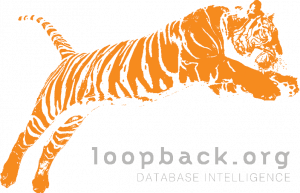Configure Oracle 11gR2 for Enterprise User Security with Oracle Internet Directory
In Oracle 11gR2, connecting the database to an LDAP server, Oracle Internet Directory in particular, is more easy than in previous versions.
It is even possible to run the LDAP connection without SSL / Advanced Security.
The basic steps are:
- create OID
- run netca to generate ldap.ora und sqlnet.ora
- run dbca to register the database in the directory
- create user schema mappings or Enterprise Roles wirth Enterprise Manager
Configure TNS for LDAP server
Run netca and provide details for your OID server.
Afterwards, in $TNS_ADMIN, ldap.ora should look like this:
cat $TNS_ADMIN/ldap.ora # ldap.ora Network Configuration File: /u01/app/11.2.0/grid/network/admin/ldap.ora # Generated by Oracle configuration tools. # DIRECTORY_SERVERS= (linux4:3060:3131) # DEFAULT_ADMIN_CONTEXT = "dc=loopback,dc=org" # DIRECTORY_SERVER_TYPE = OID
Run DBCA to register the database
Run Database Creation Assistant, configure Databse Options and register the database with OID.
DBCA will create a wallet automatically.
Configure EUS schema mappings
Group / Shared authentication
You will need al least a User/Schema mapping to access the database as a local user. You may also configure Enterprise Roles later.
Create a local User, which is identified externally:
SYS@loopds1> create user global_ident identified globally; User created. SYS@loopds1> grant connect to global_ident; Grant succeeded.
Then, create a mapping in Enterprise Manager.
- Navigate to Administraion/Security/Enterprise User Security.
- Connect to your OID as orcladmin
- Navigate to „Enterprise Domains“
- Configure the OracleDefaultDomain
- Create a mapping for a selected group of users from your LDAP subtree to the GLOBAL_IDENT schema you just created.
Alternative, you can create EUS mappings vie command line. Please note that mappings can be defined at database level or at domain level:
[oracle@oraldap1]$ eusm listMappings realm_dn="dc=loopback,dc=org" ldap_port=3060 ldap_host=oraldap1 ldap_user_dn="cn=orcladmin" ldap_user_password=XXX database_name=pkilab
LIST OF DATABASE SCHEMA MAPPINGS:: ------------------------------------ Mapping Name: MAPPING0 Mapping Type: SUBTREE Mapping DN: cn=Users,dc=loopback,dc=org Mapping schema:PUBLIC_DATASET Mapping Level :DATABASE
Mapping Name: MAPPING1 Mapping Type: ENTRY Mapping DN: cn=test,cn=Users,dc=loopback,dc=org
[oracle@linux11 ~]$ eusm listMappings domain_name="OracleDefaultDomain" realm_dn="dc=loopback,dc=org" ldap_port=3060 ldap_host=linux4 ldap_user_dn="cn=orcladmin" ldap_user_password="XXX" LIST OF DATABASE SCHEMA MAPPINGS:: ------------------------------------ Mapping Name: MAPPING0 Mapping Type: SUBTREE Mapping DN: cn=users, dc=loopback,dc=org Mapping schema:GLOBAL_IDENT Mapping Level :DOMAIN
Confirm wallet location is in sqlnet.ora
In some cases, dbca does not enter the location of the wallet it created to sqlnet.ora. The wallet is necessary even if SSL is not used.
In this cases, you will encounter this error:
ORA-28030: Server encountered problems accessing LDAP directory service
Verify this is present in your $TNS_ADMIN/sqlnet.ora:
WALLET_LOCATION= (SOURCE= (METHOD=file) (METHOD_DATA= (DIRECTORY=/u01/app/oracle/admin/loopds/wallet)))
Test the connection
oracle@linux10 ~]$ sqlplus test/ SQL*Plus: Release 11.2.0.3.0 Production on Sun Oct 14 11:53:38 2012 Copyright (c) 1982, 2011, Oracle. All rights reserved. Enter password: Connected to: Oracle Database 11g Enterprise Edition Release 11.2.0.3.0 - 64bit Production GLOBAL_IDENT@loopds1> show user USER is "GLOBAL_IDENT"
Single user authentication
Alternative, you can define any LDAP user to have his own database schema:
SQL> alter user AKIRA identified globally as 'uid=akira,cn=Users,dc=loopback,dc=org'; User altered.
[oracle@linux11 ~]$ sqlplus AKIRA@LOOPDS
SQL> show user;
USER is „AKIRA“
This takes precedence over a group mapping.
See also: Oracle® Database Enterprise User Security Administrator’s Guide 11g Release 2 (11.2)

